Nova Scotia HVAC 40 PDH Discount Package 1
Cooling Load Calculations and Principles (M06-004)
Air Conditioning Psychrometrics (M05-005)
Heat Rejection Options in HVAC Systems (M04-029)
Home Tightening, Insulation and Ventilation (M02-058)
HVAC - How to Size and Design Ducts (M06-032)
HVAC - Natural Ventilation Principles and Practices (M04-038)
HVAC Design for Oil and Gas Facilities (M04-014)
HVAC Space Heating Systems (M06-025)
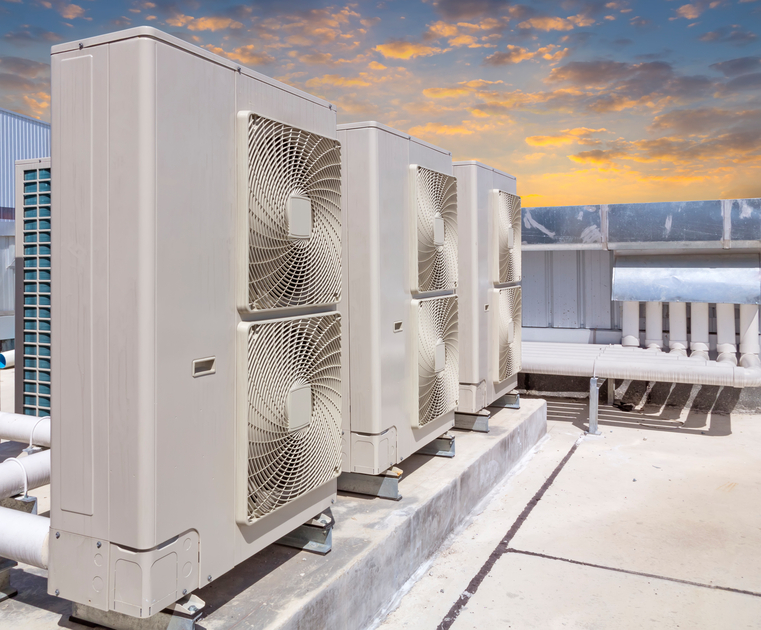
This online engineering PDH course identifies the opportunities for improving the performance of the heating and cooling system based on the type of system that is in place.
Heating and cooling systems are the largest single consumers of energy in buildings. These systems condition the air within a building so that occupants are comfortable. Heating and cooling systems consist mainly of chillers, boilers, cooling towers, and pumps. There are central heating and cooling systems, and unitary systems that combine heating and cooling. Opportunities exist for improvement to both central and unitary systems.
This 3 PDH online course is applicable to engineers, contractors, designers and other technical professionals who are involved in the retrofit of existing heating and cooling systems.
This P.Eng. continuing education course is intended to provide you with the following specific knowledge and skills:
- Understanding the best opportunities available for upgrading central cooling systems including chillers, cooling towers, water side economizers and pumps
- Understanding the best opportunities available for upgrading central heating systems including boilers and furnaces
- Understanding the best opportunities available for unitary systems including packaged or rooftop units, split system packaged units, air source heat pumps and water loop heat pump systems
- Learning about new strategies aimed at saving energy such as geothermal heat pumps, district cooling and heating, radiant heating and cooling, cool storage, high temperature difference distribution, evaporative cooling, and non-electric cooling
In this professional engineering CEU course, you need to review "Heating and Cooling System Upgrades" of the Energy Star Building Manual. (Energy Star is a joint program of the U.S. Environmental Protection Agency and the U.S. Department of Energy).
Upon successful completion of the quiz, print your Certificate of Completion instantly. (Note: if you are paying by check or money order, you will be able to print it after we receive your payment.) For your convenience, we will also email it to you. Please note that you can log in to your account at any time to access and print your Certificate of Completion.
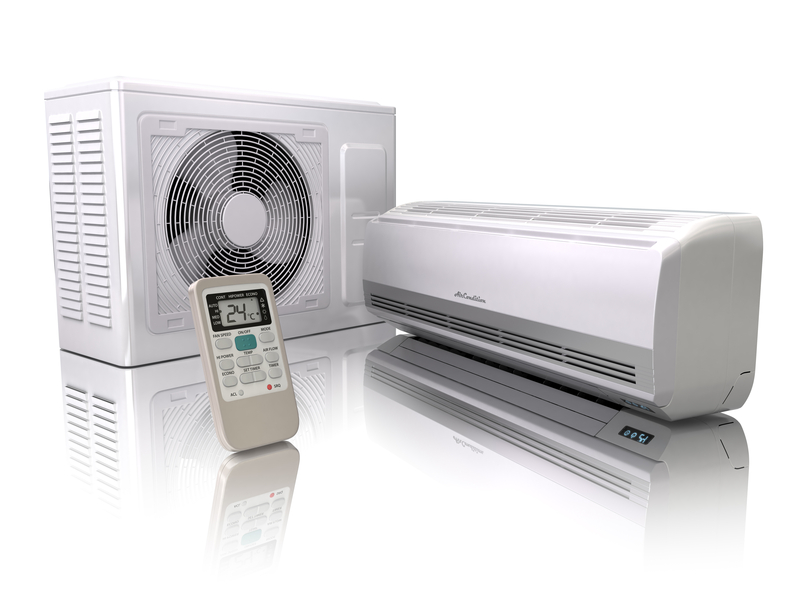
This online engineering PDH course provides a procedure for preparing a manual calculation for cooling load using CLTD/CLF method suggested by ASHRAE and includes two detailed examples. For more advanced methods such as TFM, the reader should refer to ASHRAE and other handbooks.
Heating and cooling load calculations are carried out to estimate the required capacity of heating and cooling systems, which can maintain the required conditions in the conditioned space. To estimate the required cooling or heating capacities, one has to have information regarding the design indoor and outdoor conditions, specifications of the building, specifications of the conditioned space, and any special requirements of the particular application.
Generally, heating and cooling load calculations involve a systematic and stepwise procedure, which account for all the building energy flows. In practice, a variety of methods ranging from simple rules-of-thumb to complex transfer function methods are used to arrive at the building loads.
This 6 PDH online course is applicable to mechanical engineers, design and construction personnel, technical staff and facility personnel who are interested in gaining a better understanding in cooling load calculations and principles.
This P.Eng. continuing education course is intended to provide you with the following specific knowledge and skills:
- Understand the basic terminology and definitions related to air conditioning load calculations
- Explain the differences between heating and cooling load design considerations
- Explain the difference between 1) space heat gain v/s cooling load 2) space cooling v/s cooling load and 3) external loads v/s internal loads
- Differentiate between sensible and latent loads
- List commonly used methods for estimating cooling loads
- Estimate the internal and external cooling loads using CLTD/CLF method from building specifications, design indoor and outdoor conditions, occupancy etc.
- Describe various equations and the information sources to determine conductive load through opaque building elements.
- Describe various equations and information sources to determine the solar transmission load through glazing.
- Describe various equations and information sources to determine the internal load due to people, lights and power appliances.
- Determine the supply air flow rate
- Learn by examples the detailed methodology to cooling load calculations
- Learn the functional parameters of software programs such as TRACE 700 and CHVAC
In this professional engineering CEU course, you need to review the course document titled "Cooling Load Calculations and Principles".
Upon successful completion of the quiz, print your Certificate of Completion instantly. (Note: if you are paying by check or money order, you will be able to print it after we receive your payment.) For your convenience, we will also email it to you. Please note that you can log in to your account at any time to access and print your Certificate of Completion.

This online engineering PDH course provides an overview of psychrometrics and suggests how a better understanding of psychrometrics will improve air conditioning design and selection of equipment.
Psychrometry is the study of moist air. It is significant in terms of thermal comfort and is a major consideration in design of air conditioning systems. Air conditioning engineers use the psychrometric chart to predict changes in the environment when the amount of heat and/or water in the air changes. A psychrometric chart provides a convenient way to look at the air conditioning processes and it will answer why heated air can hold more moisture, and conversely, how allowing moist air to cool will result in condensation.
This 5 PDH online course is applicable to students, mechanical and HVAC engineers, process engineers, architects, building designers, contractors, energy auditors, facility managers who are interested in gaining a better understanding of psychrometrics.
This P.Eng. continuing education course is intended to provide you with the following specific knowledge and skills:
- Understand the basic terminology and definitions related to air properties
- Read psychrometric chart
- Describe relationship of 7 air properties: DBT, WBT, RH, dew point, absolute humidity, enthalpy and specific volume
- Apply the psychrometric charts on air-conditioning applications
- Understand how the various properties of air are measured
- Understand various psychrometric processes: sensible heating and cooling, cooling and dehumidification, evaporative cooling, heating and humidification and air mixing
- Understand the air conditioning processes for 4 extreme climatic conditions viz. Miami, Phoenix, Minneapolis and Seattle
- Understand the difference between sensible heat and latent heat
- Understand the terms sensible heat factor, room sensible heat factor and grand sensible heat factor
- Understand how to calculate the required volume air flow rate
- Understand how to compute the cooling coil capacity with example
- Understand standard equations used in air conditioning
In this professional engineering CEU course, you need to review the course document titled, "Air Conditioning Psychometrics".
Upon successful completion of the quiz, print your Certificate of Completion instantly. (Note: if you are paying by check or money order, you will be able to print it after we receive your payment.) For your convenience, we will also email it to you. Please note that you can log in to your account at any time to access and print your Certificate of Completion.

This online engineering PDH course provides a comprehensive description of the five prominent heat rejection methods as applicable to air conditioning systems.
One of the basic requirements of the air conditioning and refrigeration systems is to reject heat to the outdoors. Air conditioning chillers come in two different forms:
- An air-cooled chiller uses the flow of outside air across the condenser to remove or reject heat from the chiller. Air-cooled chillers typically have the condenser mounted on the roof or somewhere outside the facility while the evaporator can either be inside or outside the facility.
- Water-cooled chillers are typically 100 tons or greater and use water to remove the heat from the condenser. Water-cooled chillers are typically more efficient than air-cooled chillers. The condenser water is kept cool by a cooling tower, or water from the city main or well water is used. A water-cooled chiller will typically have the condenser and evaporator inside a facility while the cooling tower is located outside.
The range of chillers and associated heat rejection equipment is wide ranging.
This 4 PDH online course is applicable to architects, air-conditioning engineers, controls engineers, contractors, environmentalists, energy auditors and loss prevention professionals.
This P.Eng. continuing education course is intended to provide you with the following specific knowledge and skills:
- The concept of total heat of rejection (THR), its derivation and how it applies to the process of air conditioning
- Five prominent methods of heat rejection
- Importance of sub-cooling and super-heat in air-cooled condensers
- Types, rating and selection of air cooled condensers
- Operating principle of wet cooling towers
- Types of cooling towers, cross-flow, counter-flow, induced draft and forced draft
- Capacity control of air cooled and water cooled systems
- Closed circuit fluid coolers v/s evaporative condensers
- Energy performance of air-cooled chiller v/s water cooled systems
- Effectiveness of adiabatic cooling technology
- Benefits and limitations of various heat rejection methods
- The selection of appropriate method on capital costs and environment criteria
In this professional engineering CEU course, you need to review the document titled, “Heat Rejection Options in HVAC Systems”.
Upon successful completion of the quiz, print your Certificate of Completion instantly. (Note: if you are paying by check or money order, you will be able to print it after we receive your payment.) For your convenience, we will also email it to you. Please note that you can log in to your account at any time to access and print your Certificate of Completion.
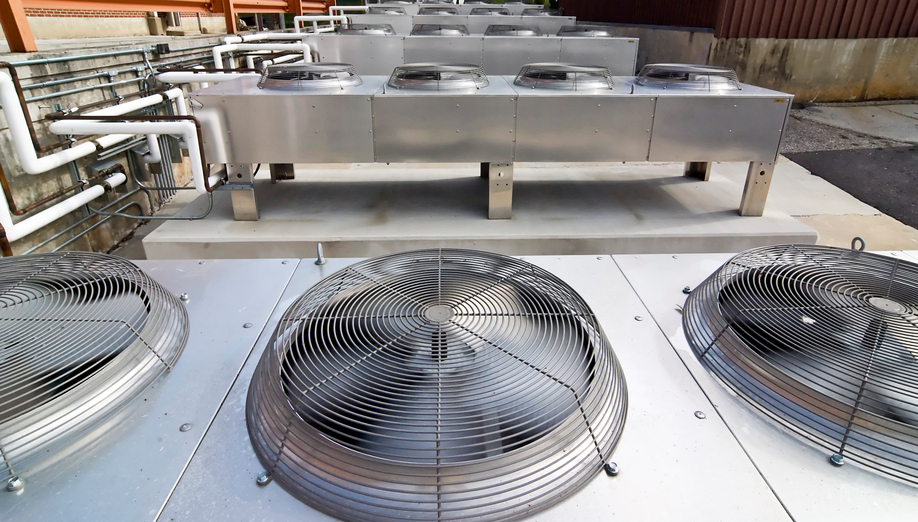
This online engineering PDH course provides information on the inspection, control and management of air leaks and presents the proper insulation and ventilation processes that make your home more comfortable and energy efficient.
The average family spends around half of its annual household energy bill on heating and cooling. This significant number can be dramatically reduced by making some simple energy-saving weatherization and insulation improvements to your home.
Air leaks through the ceiling, walls, foundations and other areas are typically the greatest sources of heating and cooling losses in a home. Insulation slows down the heat flow through a building’s envelope. Proper ventilation protects your home from moisture damage during winter and reduces heat buildup during summer. So, controlling air leaks, having the appropriate insulation and proper ventilation help in extending the life of your home, conserve energy, save money and increase your home’s overall comfort.
This 2 PDH online course is applicable to HVAC and mechanical engineers who are interested in learning about controlling air leaks, understanding the proper insulation and ventilation processes in homes.
This P.Eng. continuing education course is intended to provide you with the following specific knowledge and skills:
- Familiarizing with major sources of air leaks in a typical home
- Learning about different sealing materials, their main characteristics and applications
- Learning about insulation and its role in creating an energy-saving thermal envelope for a home
- Understanding the main characteristics of the different types of insulating materials
- Understanding the important role of ventilation in protecting homes year-round
Upon successful completion of the quiz, print your Certificate of Completion instantly. (Note: if you are paying by check or money order, you will be able to print it after we receive your payment.) For your convenience, we will also email it to you. Please note that you can log in to your account at any time to access and print your Certificate of Completion.
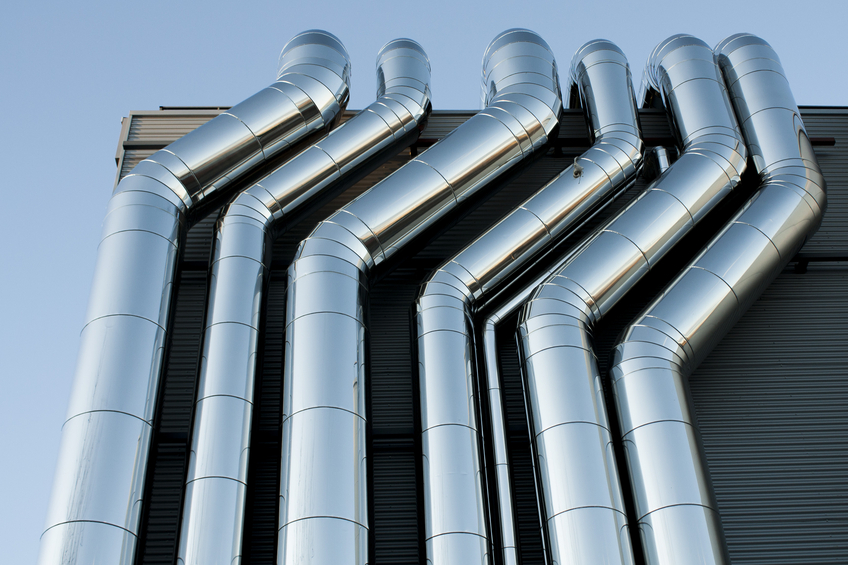
This online engineering PDH course reviews the above criteria in detail and provides guidance on the planning, layout and sizing of supply and return air ducts.
In air conditioning systems the duct is considered a static component of the installation through which air flows within the building, connecting all parts of the system. Ducts can be best described as arteries of the central air-conditioning system. These play an important role in keeping the whole HVAC system fit and achieving comfortable conditions throughout its life span.
Defects in a duct system can waste hundreds of dollars a year by forcing the HVAC system to run longer than necessary. Ductwork problems also make certain rooms too hot or too cold at different times of the year, while introducing dirt and bad odors into the forced-air system.
The objective of good duct design is to:
-
Optimize duct size (manufacturing costs);
-
Minimize duct system friction losses (operational cost);
-
Reduce duct system acoustics (environmental costs); and
-
Minimize air balance procedures (commissioning costs).
This 6 PDH online course is intended for mechanical and HVAC engineers, architects, building designers, contractors, energy auditors, facility managers, property and estate managers, O&M personnel, and other professionals interested in gaining a better understanding of sizing and designing duct systems.
This P.Eng. continuing education course is intended to provide you with the following specific knowledge and skills:
-
Learning about the velocity and pressure classifications of ductwork
-
Applying various materials and shapes that provide the most cost effective alternative
-
Learning about the various supply air duct configurations
-
Learning about the various duct sizing methods, including the velocity method, equal friction method and static regain method
-
Understanding the interaction between fan and duct systems
-
Learning about duct construction and reinforcement
-
Familiarizing with sound engineering practices for duct layout and routing
-
Learning about ductwork testing and estimating system performance
-
Learning about the various duct cleaning methods
-
Knowing the typical performance characteristics of a duct system
-
Understanding the importance of system balancing and optimization
In this professional engineering CEU course you will need to review the course document titled "HVAC - How to Size and Design Ducts".
Upon successful completion of the quiz, print your Certificate of Completion instantly. (Note: if you are paying by check or money order, you will be able to print it after we receive your payment.) For your convenience, we will also email it to you. Please note that you can log in to your account at any time to access and print your Certificate of Completion.

This online engineering PDH course outlines the basic principles underlying natural ventilation, and explains how best to proceed with a specific design. It is not intended to be a textbook of natural ventilation; the main aim is to assist designers to quickly establish how their building may be naturally ventilated.
Natural ventilation refers to the process of exchanging warm building air for cooler outside air without the use of energy-consuming mechanical devices, such as fans and air conditioners. With an increased awareness of the cost and environmental impacts of energy use, natural ventilation has become an increasingly attractive method for providing acceptable indoor environmental quality and maintaining a healthy, comfortable and productive indoor climate. In favorable climates, natural ventilation can be used as an alternative to air-conditioning systems, saving 10% to 30% of total energy consumption.
Natural ventilation is not always as simple as just providing multiple operable windows in a building. Wind patterns specific to the site, as well as building design and its arrangement, play a vital role. However, care must be taken to avoid having a wind tunnel effect in areas of the building, as this obviously provides an undesirable effect of an excessively windy environment.
This 4 PDH online course is intended for mechanical engineers, architects, building designers, energy auditors, facility managers, property and estate managers, operational and maintenance personnel, and other professionals interested in gaining a better understanding of natural ventilation practices.
This P.Eng. continuing education course is intended to provide you with the following specific knowledge and skills:
-
Understanding how natural ventilation is different from mechanical ventilation
-
Understanding the purposes and appropriate applications of natural ventilation
-
Learning about wind driven ventilation and the factors that determine the efficiency of wind ventilation
-
Learning about stack driven ventilation and the factors that enhance the stack effect
-
Determining the ventilation rate using contaminant control, heat generation and air change methods
-
Learning about infiltration and how the building porosity impact infiltration
-
Knowing the general guidelines that should be followed when designing for natural ventilation
-
Knowing the design standards and codes that govern the design of natural ventilation
-
Familiarizing with the common design tools and software available for analyzing ventilation systems
Upon successful completion of the quiz, print your Certificate of Completion instantly. (Note: if you are paying by check or money order, you will be able to print it after we receive your payment.) For your convenience, we will also email it to you. Please note that you can log in to your account at any time to access and print your Certificate of Completion.
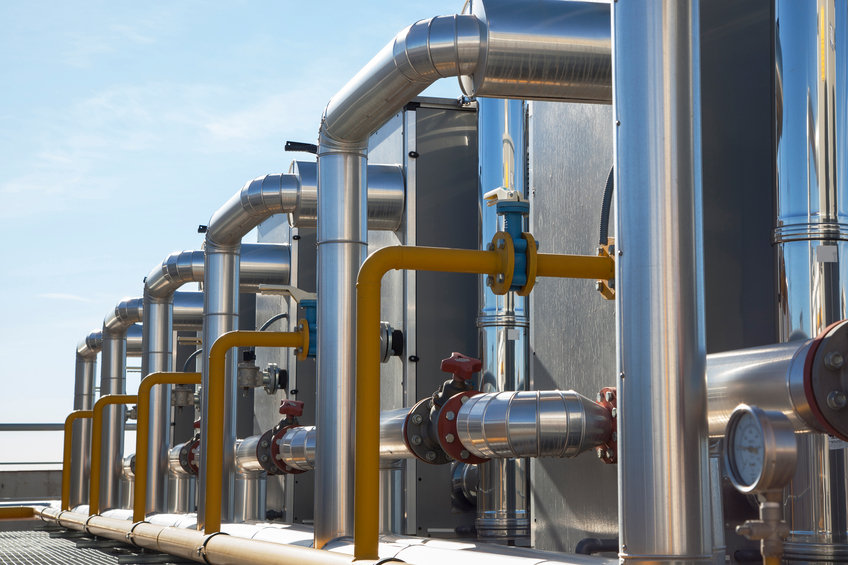
This online engineering PDH course will help explain the complexities of HVAC design for offshore installations and how to go about carrying out the selection of a proper system and related equipment.
Oil & Gas (O&G) facilities are fraught with numerous challenges related to health and safety, logistics, economics, quality assurance and overall performance. HVAC design for such facilities needs special considerations not only to minimize the potential loss to capital investment but also to isolate the personnel from life-threatening environment. The main objectives of HVAC systems in O&G facilities include:
- Maintain acceptable working and living environment for personnel and non - destructive conditions for equipment.
- Prevent ingress of potentially explosive/toxic gas-air mixtures into non-hazardous areas, electrical switch rooms and equipment rooms.
- Prevent formation of any combustible mixture and maintain an atmosphere where the gas/air mixture is kept below LEL during normal operation.
- Provide dilution ventilation for all enclosed hazardous areas in order to reduce the risk from build-up of potentially explosive/toxic gases within these spaces.
- Prevent smoke spreading and keep enclosed escape ways free of smoke in case of fire.
This 4 PDH online course is applicable to mechanical and HVAC engineers, process engineers, architects, building designers, contractors, energy auditors, facility managers who are involved in the design and installation of HVAC for oil and gas facilities.
This P.Eng. continuing education course is intended to provide you with the following specific knowledge and skills:
- Be aware of the critical design issues related to oil & gas facilities
- Understand how an offshore installation different from an onshore installation
- Understand the concept of area classification for hazardous locations
- Understand the importance of pressure differential between hazardous and non-hazardous areas.
- Understand the critical system parameters that must be controlled and monitored
- Understand the importance of dilution ventilation to mitigate the impacts of accidental releases of flammable and toxic gases
- Understand the concepts of air cleaning and filtration requirements
- Understand the requirements of blast proof intake and exhaust valves in line with structural requirements
- Understand the specifications of HVAC equipment and machinery suitable for saline corrosive atmosphere
- Understand the importance of commissioning and documentation
In this professional engineering CEU course, you need to review the course document titled "HVAC Design for Oil and Gas Facilities".
Upon successful completion of the quiz, print your Certificate of Completion instantly. (Note: if you are paying by check or money order, you will be able to print it after we receive your payment.) For your convenience, we will also email it to you. Please note that you can log in to your account at any time to access and print your Certificate of Completion.

In this online engineering PDH course we will discuss various active heating options and design considerations for the best fit strategy. We will categorize heating systems in several ways. First we will consider where the primary energy comes from. Then we will ompare the various options and discuss the variety of ways used to deliver heat within the space. Finally, we will discuss some general guidelines on the energy conservation and application strategies for various buildings.
There are almost endless variations and combinations of space heating systems, each having its strengths and limitations. There are two different but related values of interest to the heating system designer: First, to provide comfort and second, to properly select and size the appropriate heating equipment. This requires estimating the annual energy requirements and then analyzing the operating dollar expenses on prevailing fuel costs. Note that the fuel price alone is not the sole measure for selecting a heating system. The broad comparisons on the choice of a heating system is based on various system characteristics such as equipment costs, equipment efficiency, fuel source availability, required system capacity, fuel energy content in millions Btu per unit, environmental impact and heat response or recovery.
This 6 PDH online course is applicable to mechanical and HVAC engineers, architects, building designers, health and safety engineers, energy auditors, occupational physicians, industrial hygienists, facility managers and general audience working with space heat systems.
This P.Eng. continuing education course is intended to provide you with the following specific knowledge and skills:
- Understanding how heat loss occurs and what factors affect rate of heat loss
- Ability to estimate the heating load, annual energy usage rate and equipment sizing
- Familiarizing with the primary energy sources and making the comparative analysis
- Understanding the pros & cons of various heating options and ranking the various systems
- Knowing the convective and radiative heat transfer principles
- Knowing the difference between combustion, thermal and distribution efficiency
- Ability to compare among the gas fired and fuel oil fired furnaces
- Understanding the design concepts behind the hot water heating systems
- Knowing the various type of electric resistance and heat pump systems
- Ability to apply energy conservation techniques
- Understanding the various statutory code requirements
- Comparing various heating options and selecting the appropriate system
In this professional engineering CEU course, you need to review the document titled "HVAC Space Heating Systems".
Upon successful completion of the quiz, print your Certificate of Completion instantly. (Note: if you are paying by check or money order, you will be able to print it after we receive your payment.) For your convenience, we will also email it to you. Please note that you can log in to your account at any time to access and print your Certificate of Completion.